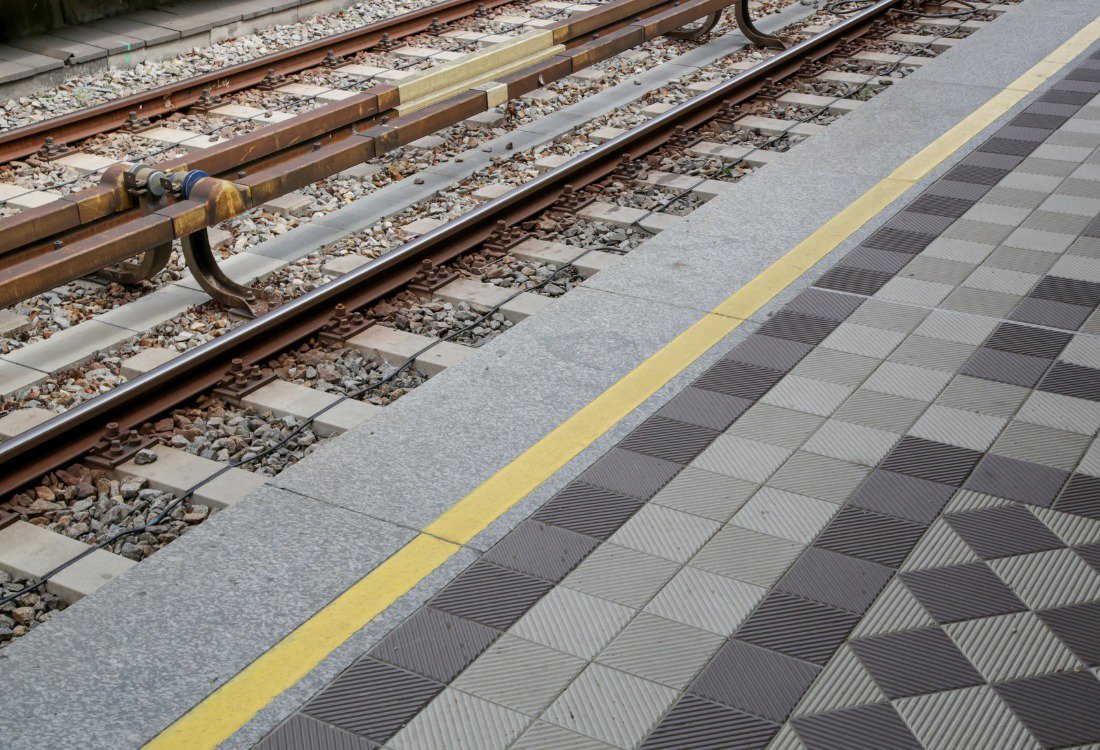Railway stations can be some of the busiest places in the country, accommodating potentially thousands of commuters and passengers each day throughout their platforms, ticket halls, retail spaces and adjoining facilities every day. As both a high traffic transport hub and a kind of ‘brand ambassador’ for the town they represent, the flooring chosen for railway stations has a lot riding on it. It has to be durable and practical and adaptable to the aesthetic identity of the railway station. In some stations, this heritage can go back 200 or more years, while others are the epitome of modern architectural style. How do you choose a flooring system for this type of environment, and is resin flooring a viable option?
Performance Requirements For Railway Station Flooring
Before giving a black and white answer about resin flooring as an option for railway stations, take a moment to think about what a flooring system has to achieve in terms of performance. Faced with heavy foot traffic, wheeled luggage, trolleys, cleaning chemicals, and exposure to rain, snow, and the elements, railway station flooring must meet several important criteria:
- Durability to withstand continual heavy use
- Slip resistance to maintain customer safety, especially in wet conditions
- Low maintenance and cleaning requirements to minimise operational costs
- Longevity to minimise the need for replacements and disruption to customers
- Personalisation ability to support your station’s branding and wayfinding requirements.
Why Resin Flooring Is The Perfect Choice For Railway Stations:
On paper and in practice, resin flooring meets all of these performance demands. Here’s how:
Durability: Made from toughened polyurethane or epoxy resin, resin flooring systems are designed to endure the heavy wear and tear caused by large crowds of commuters in a hurry, trolleys, suitcases, and heavy cleaning equipment. Resin flooring resists cracks and chips far better than polished concrete and tiles, even under brutal pressure. This makes a resin flooring system extremely cost-effective in railway station lobbies, platforms, and walkways, where your flooring is subjected to heavy stress on a daily basis. This translates directly to fewer repairs and replacements long term.
Slip resistance: Passenger safety is essential in railway stations, especially in busy ticketing and barrier areas, and on the platforms themselves. Slips and falls can cause serious accidents, especially at peak times and after rain. So is resin flooring, which is notoriously slippery, a good choice? It may surprise you that the answer is ‘yes’. Left untreated, epoxy resin is as smooth and slippery as an ice rink, but in practice, commercial flooring systems are enhanced with anti-slip additives to provide additional grip. This level of friction can be increased in high-risk areas such as staircases, ramps, and entrance ways, so that the textured finish provides an enhanced level of passenger safety, even in adverse weather.
Maintenance: Railway station floors are being almost continually cleaned by hand or by machine throughout the day, which is essential to maintain a hygienic and welcoming appearance. Over time, however, this constant cleaning routine can take a toll on your flooring, causing water damage, cracks, and chemical discolouration. Resin flooring, on the contrary, is designed to make cleaning and maintenance as straightforward as possible. Without grout lines and seams that can trap dirt, stains and debris, it is quicker and easier to carry out routine cleaning tasks across large resin surface. Resin also has the benefit of being strongly resistant to chemicals, making it capable of handling strong cleaning agents, detergents, and any other materials found in maintenance and staff areas.
Customisation: Resin flooring systems are also easier to customise than the standard concrete and tile floors found in many train stations. In fact, resin offers near limitless possibilities for personalisation, including colour matching to your station branding, or unique patterns to visually distinguish between different areas – such as walkways, waiting areas, ticket collection points, and so on. You can also even embed important safety or wayfinding signage directly into your floor, maximising visibility for important information.
What Next?
If you are considering upgrading the flooring used in your railway station’s customer areas, lobby, wash facilities, or any other space, please get in touch with one of the team at Advanced Resin today to discover the benefits of customisable resin flooring.

Image source: Canva



